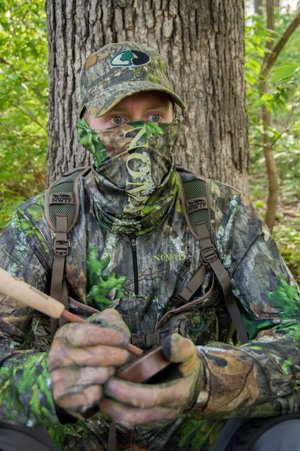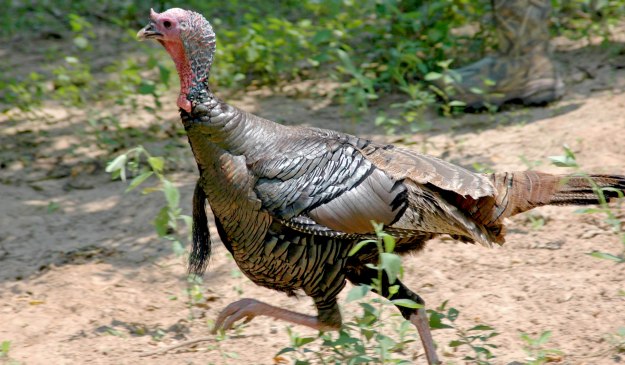 There’s a place in Maryland I hunt that I call the Rock Ledge. The front of the mountain has a straight rock ledge drop-off. A group of turkeys roost on that Rock Ledge. When they fly from the roost, they glide for about 1,000 yards and land in an agricultural field. When I first discovered those turkeys, I set up about 100 yards away from them and started calling. The first morning I hunted them, they pitched off the mountain, flew away from me and out into those fields. The next time I went to hunt them, instead of going to the mountain where they were roosting, I took my hunter to the fields where I knew the turkeys would fly. Once we set up on the edge of the field, we heard the turkeys gobbling on the Rock Ledge, and they sounded very far from us. I told the hunter I was with, “Don’t worry. Those turkeys will pitch off that mountain and come right to us.” I had set-up a decoy about 25 yards out in front of us.
There’s a place in Maryland I hunt that I call the Rock Ledge. The front of the mountain has a straight rock ledge drop-off. A group of turkeys roost on that Rock Ledge. When they fly from the roost, they glide for about 1,000 yards and land in an agricultural field. When I first discovered those turkeys, I set up about 100 yards away from them and started calling. The first morning I hunted them, they pitched off the mountain, flew away from me and out into those fields. The next time I went to hunt them, instead of going to the mountain where they were roosting, I took my hunter to the fields where I knew the turkeys would fly. Once we set up on the edge of the field, we heard the turkeys gobbling on the Rock Ledge, and they sounded very far from us. I told the hunter I was with, “Don’t worry. Those turkeys will pitch off that mountain and come right to us.” I had set-up a decoy about 25 yards out in front of us.
Although calling turkeys is very important to your success, being where the turkey wants to be before the turkey reaches that spot is the most-important aspect to successful turkey hunting. That’s the reason the skill of scouting is far more important than calling. The turkey kept calling, but I never called to the bird. I already knew we were where that gobbler wanted to come. When the gobbler pitched off the Rock Ledge, he sailed right toward that decoy and sat down in the field about 75 yards from it. That ole gobbler wanted to check things out before he came into what he thought was a hen. He looked around the field and then slowly started moving toward the decoy. When the bird was at 31 yards, my hunter squeezed the trigger and took the bird. We collected our turkey and headed back to the truck. I haven’t gone to those Rock Ledge turkeys again, however, I’ll probably go after one of those Rock Ledge gobblers this year.
Most other public-land hunters won’t be able to hear the Rock Ledge turkeys, or those who do hear them won’t be willing to walk as far as I do. The ridge where the Rock Ledges turkeys are is 3-4 miles away from the place where all the hunters who hunt that area park. So, they probably won’t hear the birds. To hear those turkeys gobble, you must climb a mountain, get on its top, walk several hundred yards down the mountain and then often the turkeys shut up. So, I had to take two or three mornings to determine that when the turkeys hushed, they were pitching off the roost and flying to those fields about 1000 yards away. At that distance, you couldn’t hear them until they started gobbling again. I put in the time required to figure out what those gobblers were doing, and where they were going.
Every time I’m hunting turkeys, I’m also scouting for the next year. I’ve found history does repeat itself, and that many times if you find a place where turkeys like to be, they’ll be in that same place the following year. If there’s more than one gobbler in that location, and you only harvest one gobbler, more than likely you’ll have more gobblers to harvest the next year, unless a construction company builds a subdivision where those turkeys want to be. I’ve found that if a turkey’s habitat doesn’t change, I can return to the same places where I’ve taken turkeys in the past and take other turkeys.




























